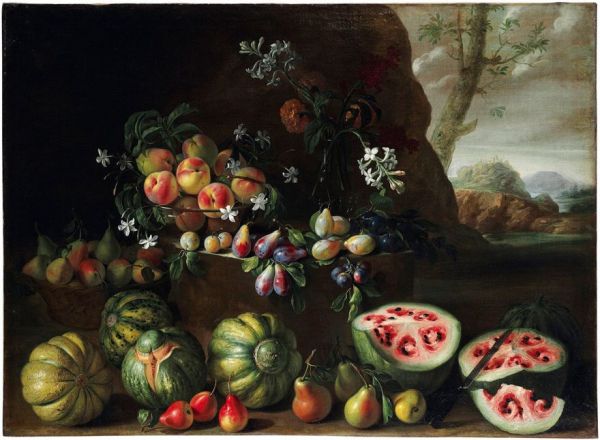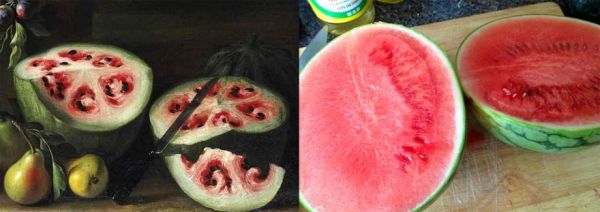

However, the "starring" we see in the watermelon's meat in the painting is something that still happens today due to sub-par growing conditions.
Here's more on how we've perfected the watermelon:
That fleshy interior is actually the watermelon's placenta, which holds the seeds. Before it was fully domesticated, that placenta lacked the high amounts of lycopene that give it the red color. Through hundreds of years of domestication, we've modified smaller watermelons with a white interior into the larger, lycopene-loaded versions we know today.
Of course, we haven't only changed the color of watermelon. Lately, we've also been experimenting with getting rid of the seeds — which Nienhuis reluctantly calls "the logical progression in domestication." Future generations will at least have photographs to understand what watermelons with seeds looked like. But to see the small, white watermelons of the past, they too will have to look at Renaissance art.

No comments:
Post a Comment